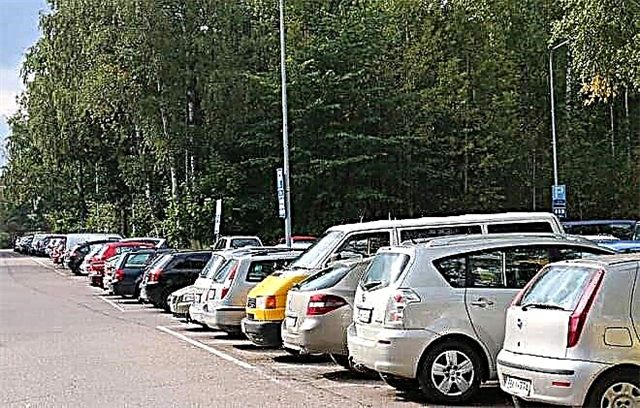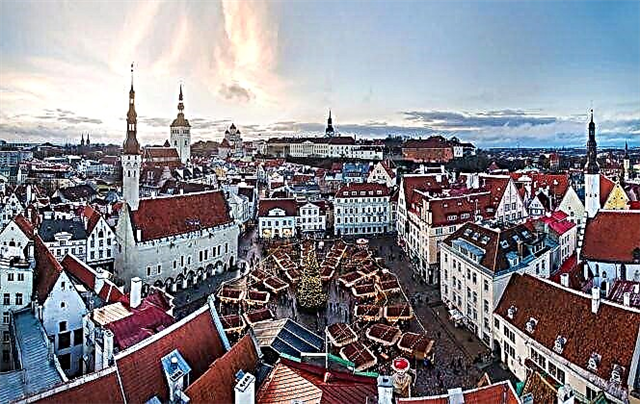Many people living in rural areas or small towns cannot find life use for themselves in their settlements. Getting a job in large cities, but remaining to live in their settlements, they become pendulum migrants.
What is pendulum migration
Pendulum migration is a type of territorial movement of citizens from one settlement to another to work or study. The term "pendulum migration" was applied to such movements due to the external similarity of the processes. The phenomenon resembles the movement of a pendulum: in the morning masses of people go to another settlement to work, and in the evening they return home.

Signs of commuting
The essence of pendulum migration is determined by several features that distinguish it from other types of migration processes. These include:
- Regularity - travel is characterized by frequent, almost daily trips;
- Duration - movements are made for a long period of time;
- No change of residence - citizens do not change their place of residence.
Differences from other types of migration
This movement has serious differences from other migration processes. Migration is the relocation of citizens to a new place of residence on a temporary or permanent basis. With pendulum migration, resettlement does not occur: citizens remain to live in their settlement.

This is its main difference from other types of migration:
- Temporalin which the person moves for a limited period of time, and the permanent place of residence does not change;
- Seasonal - a type of temporary migration, closely related to a certain season and aimed at performing work on harvesting, etc .;
- Irregular, which has an episodic character.
Reasons for commuting in Russia
Pendulum migration is typical for all countries of the world and is closely related to the development of urbanization and the growth of suburbia. The reason for the formation of such processes was the explosive development of public transport and the motorization of the population. New opportunities for mobility and reduced travel times have resulted in an ever-increasing number of people on the move.
You May Also Like
Most often this phenomenon is of an economic or labor nature. Residents of settlements find the best job offers in neighboring large cities, as there is a more diverse labor market and higher wages.

With the collapse of the USSR, many small cities, towns and villages suffered an economic collapse: it became almost impossible to find a job with decent wages here. This also explains the low cost of housing in such settlements.
Proximity to large and successful cities and well-established transport links allow people to find work there without moving to a permanent place of residence. As a result, citizens receive high salaries without having to buy expensive housing in a large city.
Another reason for commuting is the development of suburbia, that is, moving from residential areas to the suburbs, primarily to private houses. This process, the reverse of urbanization, reached its climax in the United States. Moving to the suburbs in Russia is also gaining popularity - suburbia makes it possible to create the most comfortable living conditions for wealthy citizens. The place of work does not change - people still continue to go to work in the city.
Advantages and Disadvantages of Pendulum Migration
Pendulum migration is controversial and carries pluses and minuses to both migration donors and recipients.
Dignity
The advantages of commuting include the following provisions:
- New opportunities are opening up for migrants in the labor market - they can get well-paid jobs. Thanks to this, social tension in areas with an unfavorable economic climate is reduced;
- Large cities are provided with the labor resources they need. At the same time, the social burden on the city does not increase: there is no need to build kindergartens, hospitals, schools, etc.
- Thanks to pendulum migrants, transport infrastructure is maintained and developed, connecting various settlements.

Flaws
Pendulum migration has no less disadvantages than advantages. These include the following factors:
- Lack of economic prospects in the settlement - the donor of commuting. The decline in the quality and quantity of labor resources leads to the fact that economic growth in small towns and villages is coming to naught. Pendulum migrants do not create a surplus product at their place of residence, new jobs do not appear here, etc .;
- Degradation of the social sphere of donor settlements. A significant part of taxes is paid at the place of work. For example, personal income tax is paid at the place of registration of the tax agent, that is, the employer. The result is a situation where commuting migrants pay taxes in another settlement, but use the infrastructure at their place of residence. Local budgets simply do not have enough funds to maintain the social sphere, not to mention its development;
- Increased burden on the recipient settlement associated with motorization. There is an increase in the load on the transport infrastructure - there is not enough parking, the width and density of roads, the number of traffic jams is growing, etc.
- Citizens 'travel expenses are growing - a significant part of migrants' salaries is “eaten up” by transport costs;
- Travel to and from work can take several hours. Due to fatigue, working capacity decreases, stresses increase, there is practically no free time for rest, self-development, meeting with friends. The life of migrants turns into an endless sequence of work, travel and sleep.
You May Also Like
Statistics and problems of commuting
Most of all, the phenomenon is typical for large cities, especially Moscow. The capital remains the main center of attraction for the entire Moscow region - every day it goes to Moscow more than 1.1 million inhabitants area. The return flow is much less - up to 40 thousand inhabitants of the capital leaves for work in the Moscow region every day. According to some estimates, every fourth able-bodied resident of the Moscow region is a commuter migrant.

Moscow is such a powerful center of gravity that residents of neighboring regions fall into its orbit. A significant percentage of those moving to the capital are residents of the Kaluga, Tula and Vladimir regions.
This phenomenon is facilitated by:
- Well-established railway communication;
- Imbalance in incomes between Muscovites and residents of nearby regions.
The process is also typical for other large cities. The commuting migration includes residents of St. Petersburg and the Leningrad Region (up to 200 thousand people daily), as well as other large cities. Such a migration process is most typical for those regions in which the population density is high.
Do not assume that this is an exclusively urban phenomenon. Even a rural paramedic who commutes to work in a neighboring village on a bicycle can be considered a pendulum migrant.
The total number of people moving on a daily basis between the two settlements is practically uncountable. Such persons are not required to register with government agencies. According to rough estimates, the number of such citizens can reach 10 million people or more. And this is almost 12 % able-bodied residents of the country.
Pendulum migration problems
The problems faced by pendulum migrants are related to the expenditure of money and time to get to the place of work or study. In the course of time, inhabitants of more and more distant settlements are included in this process.
Because of this, the time spent by migrants on the road increases. The result is a tangible decline in the quality of life of migrants, which is not always offset by increased income.
Pendulum migration is a natural socio-economic process that is characteristic of the whole world and has its pros and cons. The development of public transport and the motorization of the population have led to the fact that an increasing percentage of the population of Russia is becoming commuting migrants.











